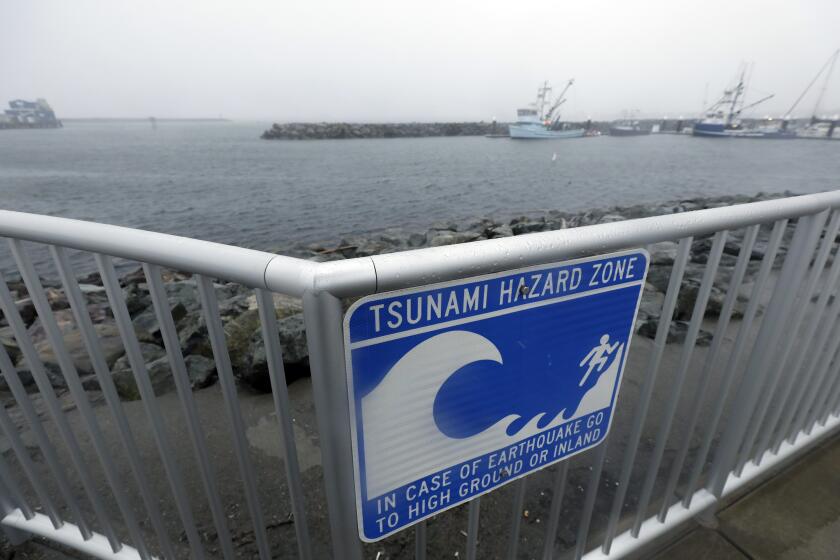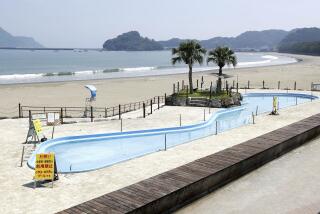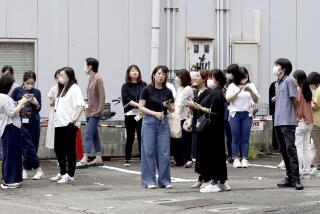Cleanup begins after 7.4 quake shakes northern Japan, killing 4
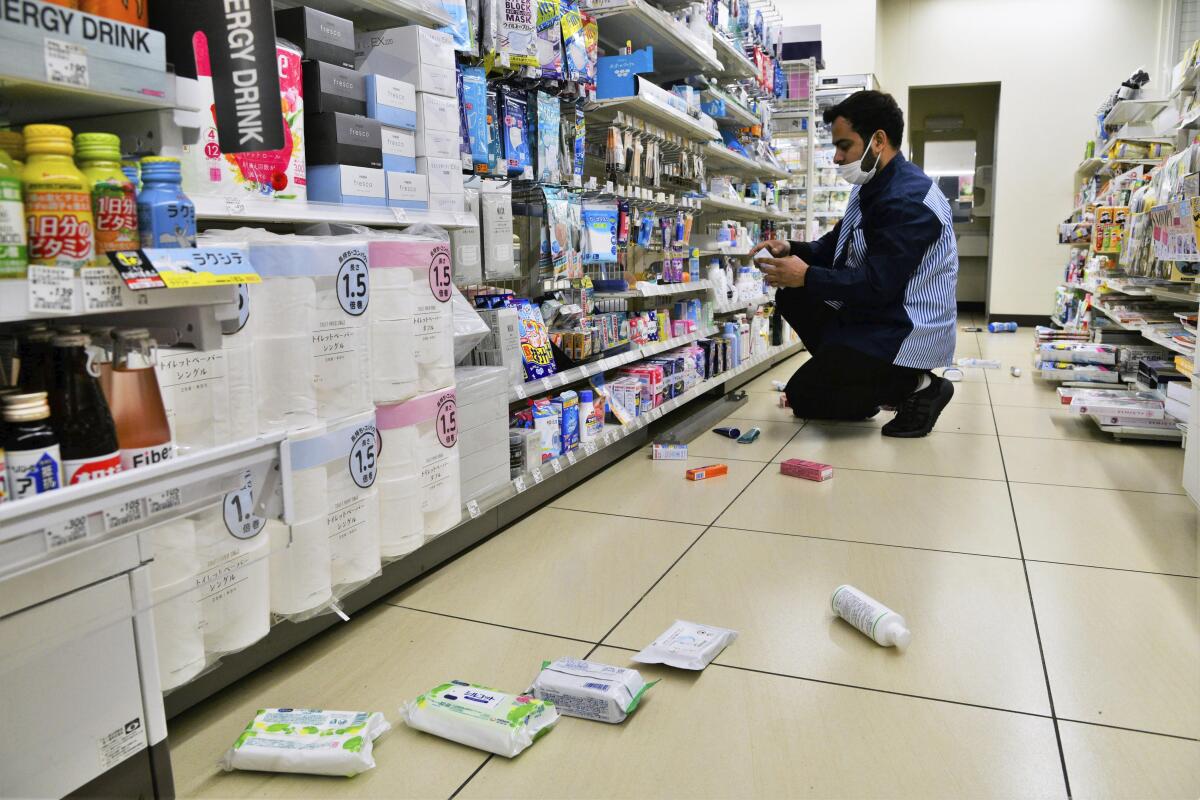
- Share via
TOKYO — Residents in Fukushima and Miyagi were cleaning their homes after a sleepless night following a powerful 7.4-magnitude earthquake that struck off the northern Japanese coast, smashing furniture, knocking out power and killing four people.
The region is part of northern Japan that was devastated by a deadly 9.0 quake and tsunami 11 years ago that also caused nuclear plant meltdowns, spewing massive radiation that still makes some parts uninhabitable.
Chief Cabinet Secretary Hirokazu Matsuno told reporters Thursday morning that four people had died during the quake and that the cause of their deaths was being investigated, while 107 others were injured. A man in his 60s in Soma city died after falling from the second floor of his house while trying to evacuate, and a man in his 70s suffered a heart attack, Kyodo News reported earlier.
The Japan Meteorological Agency later lifted its low-risk advisory issued along the coasts of Fukushima and Miyagi prefectures early Thursday. Tsunami waves of 11 inches reached shore in Ishinomaki, about 240 miles northeast of Tokyo.
The agency upgraded the magnitude of the quake to 7.4 from the initial 7.3, and the depth from 37 miles below the sea to 35 miles.
Residents in hard-hit areas found new damage in daylight Thursday, cleaning their homes, putting fallen furniture and appliances back into place and scooping up broken dishes and windows.
Employees were starting to clean up at a hotel in Yabuki in Fukushima prefecture where the wall was broken, the front door was thrown out of place and dishes were broken.
“I don’t even know where to start,” hotel President Mineyuki Otake told NHK.
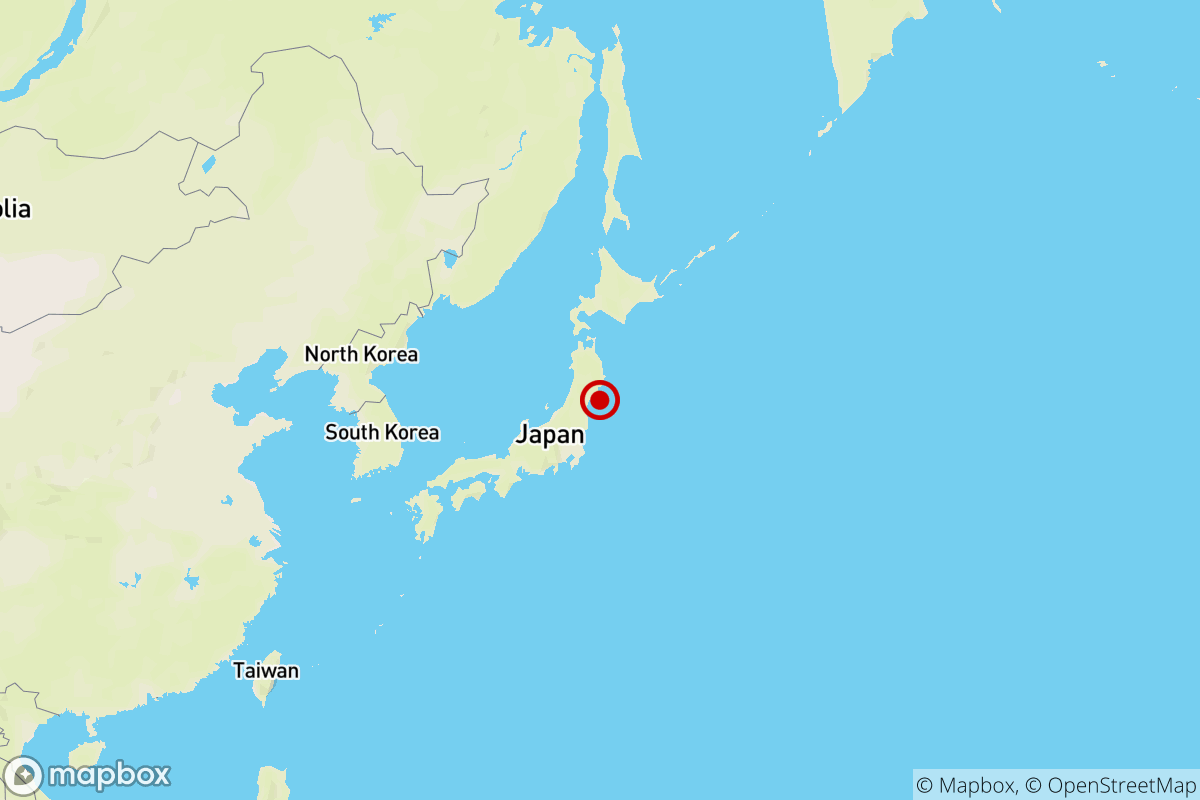
NHK video showed broken walls of a department store building that had fallen to the ground and shards of windows scattered on the street near the main train station in Fukushima, about 36 miles west of the coastline. Roads were cracked and water poured from pipes underground.
On Thursday, Japan’s Self-Defense Forces delivered fresh water to residents in Soma, Iitate and several other coastal towns in Fukushima where water systems were damaged.
Video also showed furniture and appliances smashed to the floor at apartments in Fukushima. Cosmetics and other merchandise at convenience stores fell from shelves and scattered on the floor. In Yokohama, near Tokyo, an electric pole nearly fell.
Tokyo Electric Power Company Holdings, which operates the Fukushima Daiichi nuclear plant, where the cooling systems failed after the 2011 disaster, said Thursday that workers at the site — which is being decommissioned — found some tanks holding treated radioactive water were out of alignment after the temblor, and what could be a steel beam fell from a roof of the No. 4 reactor building, which has no fuel inside.
Japan’s Nuclear Regulation Authority said that a fire alarm went off at the turbine building of No. 5 reactor at Fukushima Daiichi, but that there was no fire. Water pumps for the spent-fuel cooling pool at two of the four reactors at Fukushima Daini briefly stopped but later resumed operation. Fukushima Daini, which survived the 2011 tsunami, is also set for decommissioning.
Japan’s Air Self-Defense Force said it dispatched fighter jets from the Hyakuri base in Ibaraki prefecture, just south of Fukushima, for information gathering and damage assessment.
More than 2.2 million homes were temporarily without electricity in 14 prefectures including the Tokyo region, but power was restored at most places by the morning, except for about 37,000 homes in the hardest-hit Fukushima and Miyagi prefectures, according to Tohoku Electric Power Co., which services the region.
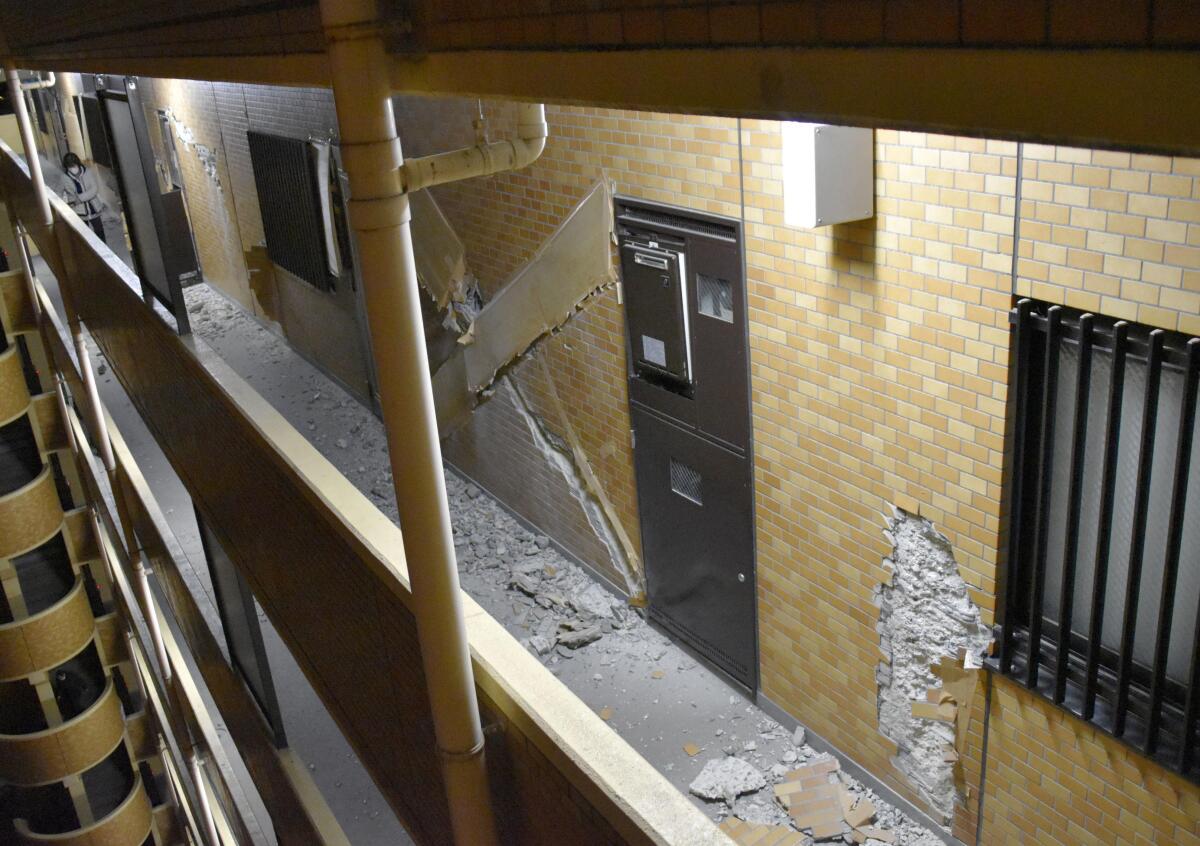
The quake shook large parts of eastern Japan, including Tokyo, where buildings swayed violently.
East Japan Railway Co. said most of its train services were suspended for safety checks.
Many people formed long lines outside major stations while waiting for trains to resume operation late Wednesday, but trains in Tokyo operated normally Thursday morning.
California is hit by about one tsunami a year, but most are barely noticeable. That said, if you live or work near the water or ever visit the coast, you should know what to do if there’s a big earthquake or a tsunami warning.
A Tohoku Shinkansen express train partially derailed between Fukushima and Miyagi because of the quake, but nobody was injured, Prime Minister Fumio Kishida said.
Matsuno, the top spokesman, said, “We are doing our utmost in rescue operations and putting people’s lives first.”
He urged residents in the affected areas to use extra caution and be prepared for possible major aftershocks for about a week.
More to Read
Get earthquake-ready in six weeks
From building a kit to buying insurance, our Unshaken newsletter course will help you prepare.
You may occasionally receive promotional content from the Los Angeles Times.
